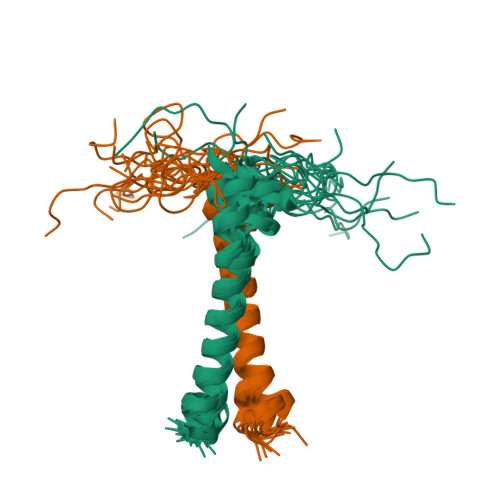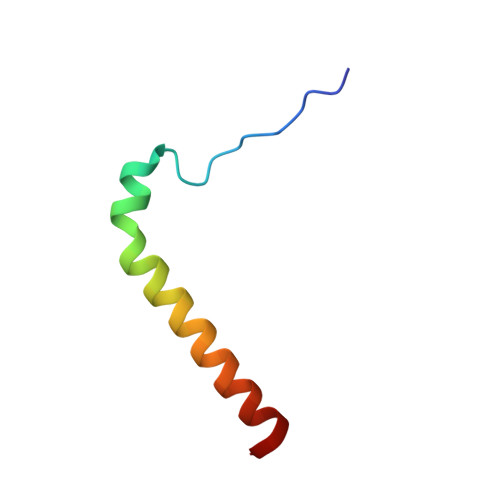Unique dimeric structure of BNip3 transmembrane domain suggests membrane permeabilization as a cell death trigger.
Bocharov, E.V., Pustovalova, Y.E., Pavlov, K.V., Volynsky, P.E., Goncharuk, M.V., Ermolyuk, Y.S., Karpunin, D.V., Schulga, A.A., Kirpichnikov, M.P., Efremov, R.G., Maslennikov, I.V., Arseniev, A.S.(2007) J Biological Chem 282: 16256-16266
- PubMed: 17412696
- DOI: https://doi.org/10.1074/jbc.M701745200
- Primary Citation of Related Structures:
2J5D - PubMed Abstract:
BNip3 is a prominent representative of apoptotic Bcl-2 proteins with rather unique properties initiating an atypical programmed cell death pathway resembling both necrosis and apoptosis. Many Bcl-2 family proteins modulate the permeability state of the outer mitochondrial membrane by forming homo- and hetero-oligomers. The structure and dynamics of the homodimeric transmembrane domain of BNip3 were investigated with the aid of solution NMR in lipid bicelles and molecular dynamics energy relaxation in an explicit lipid bilayer. The right-handed parallel helix-helix structure of the domain with a hydrogen bond-rich His-Ser node in the middle of the membrane, accessibility of the node for water, and continuous hydrophilic track across the membrane suggest that the domain can provide an ion-conducting pathway through the membrane. Incorporation of the BNip3 transmembrane domain into an artificial lipid bilayer resulted in pH-dependent conductivity increase. A possible biological implication of the findings in relation to triggering necrosis-like cell death by BNip3 is discussed.
Organizational Affiliation:
Laboratory of Structural Biology, Shemyakin-Ovchinnikov Institute of Bioorganic Chemistry, Russian Academy of Sciences, ul. Miklukho-Maklaya, 16/10, Moscow 117997, Russia. bon@nmr.ru
















